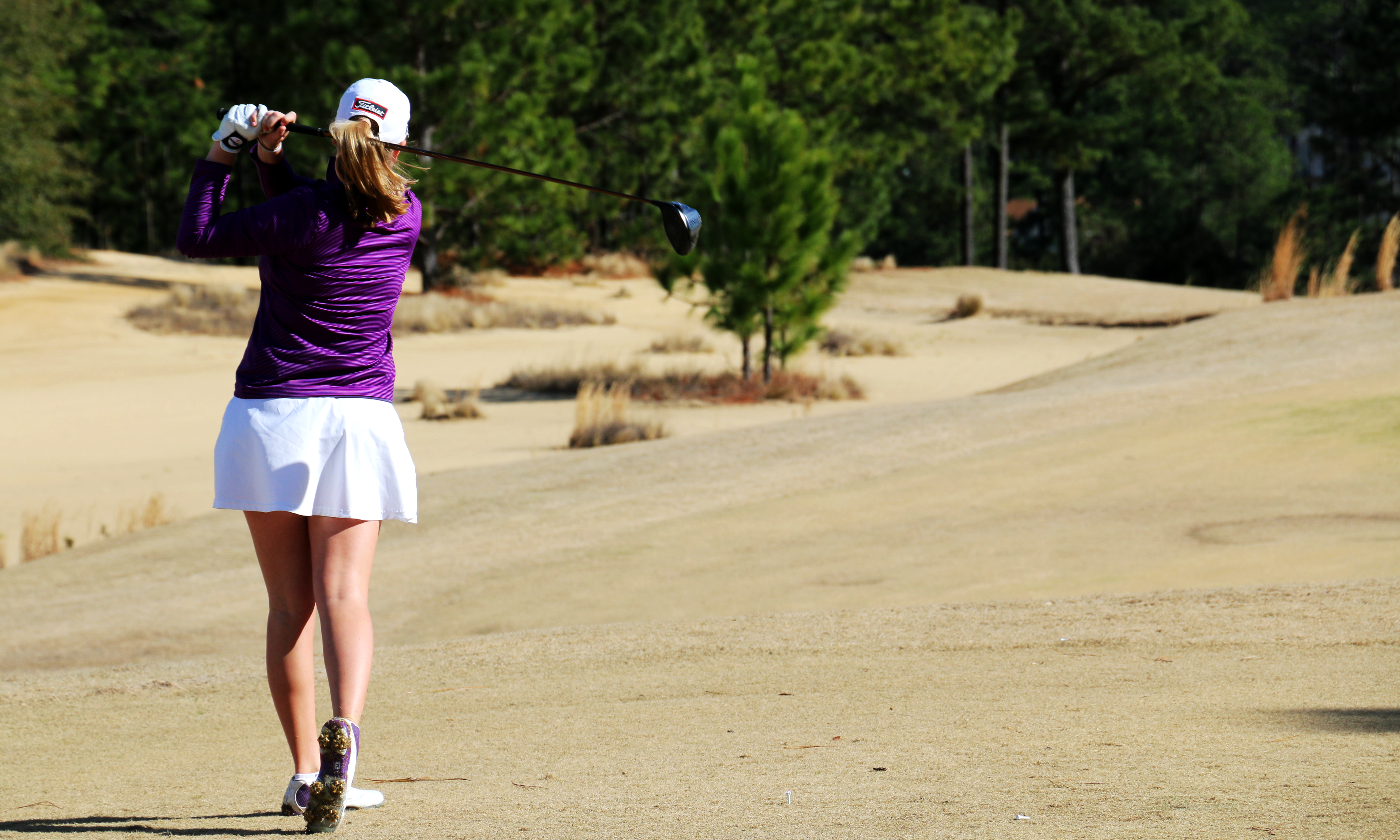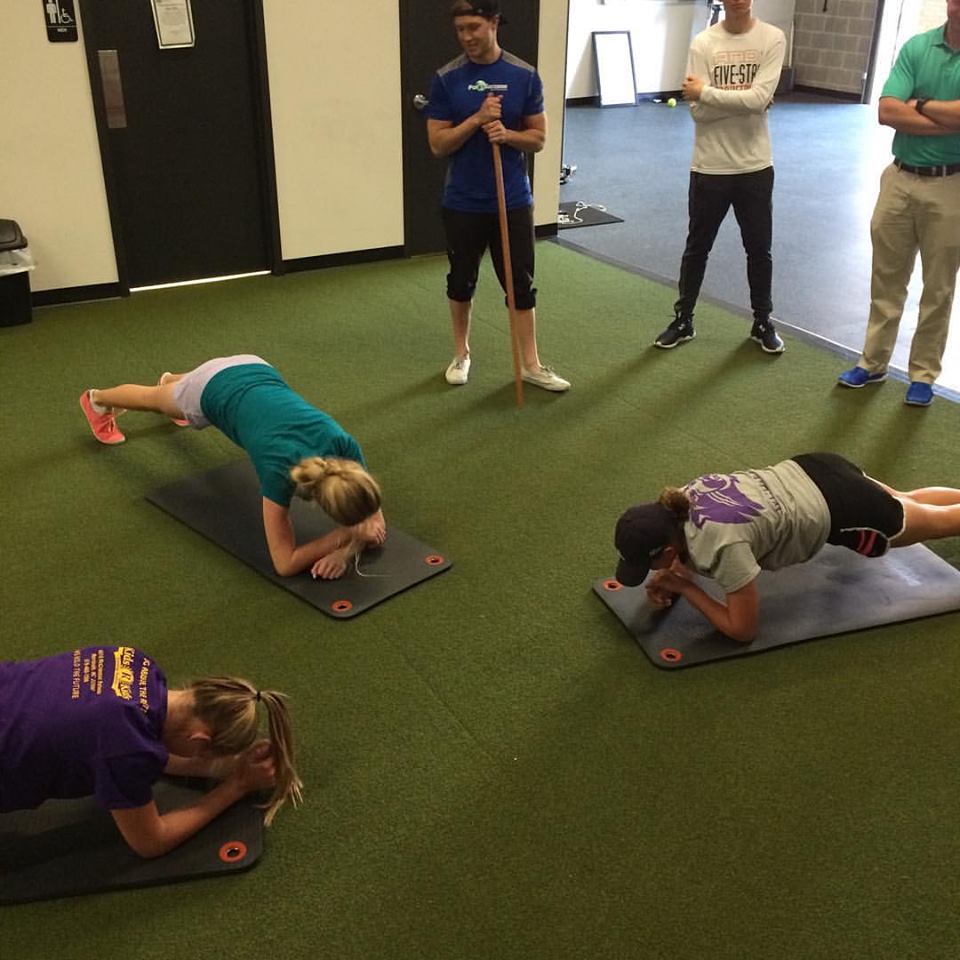By Physical Performance Consultant Chris Finn of Par4Success
Introduction
Many have probably heard the saying, “You have to train fast to be fast.” In the world of sports performance, however, very little is that cut and dry. In the past month, my athletes have been training very slowly, particularly in the lowering phase of their lifts, known as the eccentric phase. I am currently training golfers, athletes whose sport requires short burst of explosive effort. Why would we be moving slowly then? While commonly overlooked, focusing on the eccentric phase of movement can return great results for athletic performance for strength and power athletes. In this post, I will discuss the what the research says about eccentric overload and eccentric focused training as well as different means of overloading the eccentric phase of movement.
First, lets talk about the tri-phasic nature of movement. Nearly every movement in sport consists of three phases:
- The Eccentric or Yielding Phase
- Isometric or Amortization Phase
- Concentric or Overcoming Phase
Let’s take the vertical jump for example. When we swing our arms down and load the hips in a jump, we are applying tension to our muscles as they lengthen. This is known as the eccentric phase of the jump. At the bottom of the jump, we are transitioning from the lowering phase to the rising stage of the jump and are still applying large amounts of muscular tension, while our joint angles and muscle lengths remain unchanged. This is an example of an isometric phase of movement. Finally, we have the concentric phase of movement that most are familiar with in which our muscles contract and we apply tension as our muscles shorten.
These three phases can be seen in all nearly all movement, yet we commonly only focus on the concentric phase in our training. The eccentric phase of movement, however, is crucial as it is during this phase of movement that we store large amounts of energy in our connective tissues that we can then utilize for greater concentric power if we are strong enough to effectively decelerate and reapply this force. If we are weak in this phase of movement, not only will we be inefficient in transferring the energy from the eccentric phase, but we put ourselves at a greater risk of injury.
Performance Benefits of Eccentric Training:
- Reduced risk of Injury
- Improvement in strength and power output
- Greater movement efficiency
- Improved Mobility
- Greater Muscular Hypertrophy
Injury Prevention Benefits
Eccentric focused exercises have commonly been prescribed as a method for the treatment of a number of injuries, specifically overuse injuries such as tendinopathies in which you have chronic inflammation or pain in the soft-tissue that surrounds your muscles and joints [1-6]. Eccentric training has been found to be a highly effective method for improving the size and quality of soft-tissue, reducing pain in the affected limbs and improving return to play success [3, 5, 7, 8]. They say that the best way to treat an injury is to prevent it, yet despite the great rehabilitative effects of this modality of training, it is commonly overlooked as a preventative tool. Legendary strength coach and sports scientist, Yuri Verkhoshansky put it well in his book Supertraining when he stated,
“Overemphasis on muscle strengthening at the expense of tendon and other connective tissue strengthening can produce a muscle complex which is prone to injury and inefficient in generating reactive strength.”
Research has shown eccentric training to be an effective method of reducing both new and recurring injuries [9-12] . The majority of injuries in sport happen eccentrically during decelerative movement. If we cannot handle the amount of force we are attempting to absorb eccentrically, the body will compensate to deal with the stress which can then lead to injuries. It is logical that if we have the eccentric strength to handle greater forces as our muscles lengthen and we improve the quality of our connective tissue we would be less likely to be injured.
Improved Sports Performance
After reducing the risk of injury, a performance coach’s most important role is to improve performance. While there are countless methods and strategies for improving sports performance, some better than others, it is important that we address eccentric strength. Eccentric training, specifically eccentric overload, has been shown to generate greater motor unit recruitment specifically that of fast-twitch muscle fibers as well as the rate of force development leading to greater amounts of generated mechanical tension throughout the muscle [6, 13-25],. These neurological improvements along with changes in the elastic properties of the musculotendinous unit like contribute to the increases in speed, power, strength and change of direction ability found in research on the subject. Furthermore, eccentric training has been shown to improve an athlete’s efficiency of movement in that they are better capable of absorbing potential energy during the eccentric phase of movement and then exerting in concentrically [26-29]. An athlete with greater movement efficiency, strength and power is sure to perform better in their sport.
Increased Muscular Hypertrophy
The three main stimuli for stimulating muscular hypertrophy are
- Mechanical Tension
- Muscular Damage
- Metabolic Stress
Eccentric training has been proposed as a effective method of improving muscular hypertrophy as, in addition to significantly increasing mechanical tension, eccentric training yields greater amounts of muscular damage as the Z-Disks that connect sarcomeres are essentially being pulled apart [6, 17, 30-33]. Furthermore, eccentric training is less energetically demanding than traditional training means [6, 17, 34]. Combine that with the metabolic stress that could be yielded by the increased amount of time under tension with slower movement and you have an environment that is highly conducive to muscular hypertrophy and would produce a lesser energy demand making achieving a caloric surplus easier to achieve.
Improved Mobility
Lasting changes in mobility require not just the stretching of the muscle and connective tissue as the improvements in range of motion seen with these methods tend to be short lasting. To create lasting change in range of motion, we must move our bodies through the new-found range of motion and eventually add load through the range of motion. Movement creates neuromuscular activation of the stretched muscles which essentially teaches our bodies how to use that range of motion. Greater loads generate greater amounts of neuromuscular activation and is a necessary step in being able to keep this change in range of motion. Eccentrically overload exercises creates muscular stretch and very high amounts of muscular activation which both contribute to lasting changes in mobility. Furthermore, it has been proposed that eccentric contractions lead to what is known as sarcomerogenesis, or the generation of new sarcomeres (muscle cells) essentially lengthening the muscle itself [35-39].
Methods of Eccentric Overload to Train like the Pros
There are various methods of applying eccentric overload including:
- Submaximal slow repetitions
- Supramaximal slow negatives
- Changes in exercise choice between eccentric and concentric movement
- Eccentrically overloaded plyometrics
- Flywheel Training
While all of these methods are effective, there are pros and cons to each.
Submaximal Slow Repetitions
This method can be great for those who are new to eccentric based training and is more easily incorporated into training programs then other methods. Furthermore, from my own personal experience, I have found this method to be very effective in reinforcing technique. The slow and controlled nature of this method requires athletes to truly own their positions throughout the movements and prevents compensations that occur when athletes become too dependent on bouncing out of the bottom of a movement. Furthermore, any errors in form would be highlighted by the slow movement and can be addressed by a coach. Cal Dietz and Ben Petersen provide the following loading suggestions for this method in their book Triphasic Training:

While this method has many benefits, more elite athletes may require greater methods of eccentric overload to stimulate further improvements.
Supermaximal, Slow Negatives
We can typically handle 120-170% of our concentric max strength eccentrically. This method involves the supramaximal loading of a movement, such as our back squat, and lowering it as slowly as possible to pins or releasing the weight through the use of such implements as eccentric hooks.
While this method is highly effective, the supramaximal nature of it inherently comes with an increased risk of injury, especially for those who are inexperienced in eccentric training and should therefore be reserved for higher level athletes who have had time to develop a greater foundation of strength and eccentric capacity.
Changes in Exercise from Eccentric to Concentric
This is another effective method that can be utilized to create eccentric overload without the need for a spotter. One effective method is to use a slow, controlled unilateral movement through the eccentric phase and then switching to a bilateral movement during the concentric. Examples would include controlling a single leg squat down to a box and then standing back up with both legs.
Other examples are doing a single-leg Romanian deadlift during the descent and then returning up with both legs or doing a single-arm push-up to a regular push-up.
Another example of this method is switching the biomechanical advantage of the movement. An example would be to do a conventional deadlift during the concentric followed by a Romanian deadlift during the eccentric or a dumbbell press to a dumbbell fly. Another example is using a dumbbell snatch to get the weight overhead and then doing a slow eccentric press to lower the weight.
Eccentrically Overloaded Plyometrics
This method is also known as the shock method introduced by Yuri Verkhoshansky and is best illustrated through movements such as depth jumps in which an athlete steps from a box, quickly absorbs the load of the drop and jumps as high as possible.
Flywheel Based Training
Flywheel training is a more recent advancement in eccentric training and has become one of the safest and most effective methods of stimulating eccentric overload. Flywheel resistance operates off of inertia which means that the more force that a person puts into the wheel the more it will exert on the athlete through the eccentric. Rather than relying on gravity, when you exert a large amount of force into the flywheel it then pulls you back down with an equal amount of force. To get true overload, however, an athlete must either use assistance through the concentric such as using the upper body to help pull back up and then resisting with the lower body alone or simply stopping the movement short and absorbing the force in a shortened range or using the method discussed prior to accentuate the eccentric portion. This method, however, has been found to be highly effective and has a reduced risk of injury as it only exerts what an athlete is capable of exerting concentrically and as an athlete fatigues they receive less resistance.
Putting it All Together:
Eccentric based training and specifically eccentric overload has been shown to provide improvements in strength, power, speed, change of direction ability and mobility while also reducing the risk for injury. There are various methods of training eccentrically each with their own pros and cons. While eccentric training has a valuable place in the training program of athletes, care needs to be taken to assure proper recovery and execution of the methods discussed above and, whenever possible, should be done in the presence of an experienced coach. Furthermore, due to the increased muscular damage, soreness and neural fatigue associated with eccentric training, it may not be an ideal form of training in-season. Furthermore, nutrition and recovery must be taken very seriously with this type of training to promote adaptations and prevent injuries from under-recovery between training bouts. If these methods are given proper respect and attention, however, they can make a lasting difference in performance and longevity in sport.
Want to learn how to train eccentrically like the pros? Contact Par4Success at (919) 377 – 2084 or visit our website at par4success.com.
References:
- Jonsson, P. and H. Alfredson, Superior results with eccentric compared to concentric quadriceps training in patients with jumper’s knee: a prospective randomised study. Br J Sports Med, 2005. 39(11): p. 847-50.
- Jonsson, P., et al., New regimen for eccentric calf-muscle training in patients with chronic insertional Achilles tendinopathy: results of a pilot study. Br J Sports Med, 2008. 42(9): p. 746-9.
- Langberg, H., et al., Eccentric rehabilitation exercise increases peritendinous type I collagen synthesis in humans with Achilles tendinosis. Scandinavian Journal of Medicine & Science in Sports, 2007. 17(1): p. 61-66.
- Beyer, R., et al., Heavy Slow Resistance Versus Eccentric Training as Treatment for Achilles Tendinopathy: A Randomized Controlled Trial. Am J Sports Med, 2015. 43(7): p. 1704-11.
- Kjaer, M. and K.M. Heinemeier, Eccentric exercise: acute and chronic effects on healthy and diseased tendons. Journal of Applied Physiology, 2014. 116(11): p. 1435-1438.
- Hyldahl, R.D. and M.J. Hubal, Lengthening our perspective: Morphological, cellular, and molecular responses to eccentric exercise. Muscle & Nerve, 2014. 49(2): p. 155-170.
- Kaux, J.F., et al., Eccentric training improves tendon biomechanical properties: a rat model. J Orthop Res, 2013. 31(1): p. 119-24.
- Kaux, J.F., et al., Eccentric Training for Tendon Healing After Acute Lesion: A Rat Model. Am J Sports Med, 2017. 45(6): p. 1440-1446.
- Petersen, J., et al., Preventive effect of eccentric training on acute hamstring injuries in men’s soccer: a cluster-randomized controlled trial. Am J Sports Med, 2011. 39(11): p. 2296-303.
- Askling, C., J. Karlsson, and A. Thorstensson, Hamstring injury occurrence in elite soccer players after preseason strength training with eccentric overload. Scandinavian journal of medicine & science in sports, 2003. 13(4).
- Goode, A.P., et al., Eccentric training for prevention of hamstring injuries may depend on intervention compliance: a systematic review and meta-analysis. Br J Sports Med, 2015. 49(6): p. 349-56.
- Hibbert, O., et al., A systematic review of the effectiveness of eccentric strength training in the prevention of hamstring muscle strains in otherwise healthy individuals. N Am J Sports Phys Ther, 2008. 3(2): p. 67-81.
- Alves, T., et al., Strength gain through eccentric isotonic training without changes in clinical signs or blood markers. BMC Musculoskelet Disord, 2013. 14: p. 328.
- Balshaw, T.G., et al., Reduced firing rates of high threshold motor units in response to eccentric overload.Physiological reports. 5(2).
- Barrue-Belou, S., et al., Neural adaptations to submaximal isokinetic eccentric strength training. Eur J Appl Physiol, 2016. 116(5): p. 1021-30.
- Baroni, B.M., et al., Time course of neuromuscular adaptations to knee extensor eccentric training. Int J Sports Med, 2013. 34(10): p. 904-11.
- Bogdanis, G.C., et al., Muscle Fiber and Performance Changes after Fast Eccentric Complex Training. Med Sci Sports Exerc, 2018. 50(4): p. 729-738.
- Cadore, E.L., et al., Muscle conduction velocity, strength, neural activity, and morphological changes after eccentric and concentric training. Scand J Med Sci Sports, 2014. 24(5): p. e343-52.
- Carvalho, A., et al., Effect of a short time concentric versus eccentric training program on electromyography activity and peak torque of quadriceps. J Hum Kinet, 2014. 41: p. 5-13.
- de Hoyo, M., et al., Effects of a 10-week in-season eccentric-overload training program on muscle-injury prevention and performance in junior elite soccer players. Int J Sports Physiol Perform, 2015. 10(1): p. 46-52.
- Elmer, S.J. and J.C. Martin, Construction of an isokinetic eccentric cycle ergometer for research and training. J Appl Biomech, 2013. 29(4): p. 490-5.
- Cook, C.J., C.M. Beaven, and L.P. Kilduff, Three weeks of eccentric training combined with overspeed exercises enhances power and running speed performance gains in trained athletes. J Strength Cond Res, 2013. 27(5): p. 1280-6.
- Chaabene, H., et al., Change of Direction Speed: Toward a Strength Training Approach with Accentuated Eccentric Muscle Actions. Sports Med, 2018.
- Papadopoulos, C., et al., Multiarticular isokinetic high-load eccentric training induces large increases in eccentric and concentric strength and jumping performance. J Strength Cond Res, 2014. 28(9): p. 2680-8.
- Walker, S., et al., Greater Strength Gains after Training with Accentuated Eccentric than Traditional Isoinertial Loads in Already Strength-Trained Men. Front Physiol, 2016. 7: p. 149.
- Hedayatpour, N. and D. Falla, Physiological and Neural Adaptations to Eccentric Exercise: Mechanisms and Considerations for Training. Biomed Res Int, 2015. 2015: p. 193741.
- Wilson, G.J., A.J. Murphy, and A. Giorgi, Weight and plyometric training: effects on eccentric and concentric force production. Can J Appl Physiol, 1996. 21(4): p. 301-15.
- Wilson, G.J., A.J. Murphy, and J.F. Pryor, Musculotendinous stiffness: its relationship to eccentric, isometric, and concentric performance. Journal of Applied Physiology, 1994. 76(6): p. 2714-2719.
- Sheppard, J., et al., The Effect of Training with Accentuated Eccentric Load Counter-Movement Jumps on Strength and Power Characteristics of High-Performance Volleyball Players. International Journal of Sports Science & Coaching, 2008. 3(3): p. 355-363.
- Baroni, B.M., et al., Muscle architecture adaptations to knee extensor eccentric training: rectus femoris vs. vastus lateralis. Muscle Nerve, 2013. 48(4): p. 498-506.
- Maroto-Izquierdo, S., et al., Skeletal muscle functional and structural adaptations after eccentric overload flywheel resistance training: a systematic review and meta-analysis. J Sci Med Sport, 2017. 20(10): p. 943-951.
- Norrbrand, L., et al., Resistance training using eccentric overload induces early adaptations in skeletal muscle size. European Journal of Applied Physiology, 2008. 102(3): p. 271-281.
- Vaczi, M., et al., Mechanical, hormonal, and hypertrophic adaptations to 10 weeks of eccentric and stretch-shortening cycle exercise training in old males. Exp Gerontol, 2014. 58: p. 69-77.
- Menard, M.R., et al., Relative metabolic efficiency of concentric and eccentric exercise determined by 31P magnetic resonance spectroscopy. Archives of Physical Medicine and Rehabilitation. 72(12): p. 976-983.
- Alonso-Fernandez, D., P. Docampo-Blanco, and J. Martinez-Fernandez, Changes in muscle architecture of biceps femoris induced by eccentric strength training with nordic hamstring exercise. Scand J Med Sci Sports, 2018. 28(1): p. 88-94.
- Mahieu, N.N., et al., Effect of eccentric training on the plantar flexor muscle-tendon tissue properties. Med Sci Sports Exerc, 2008. 40(1): p. 117-23.
- O’Sullivan, K., S. McAuliffe, and N. Deburca, The effects of eccentric training on lower limb flexibility: a systematic review. Br J Sports Med, 2012. 46(12): p. 838-45.
- Nelson, R.T., A Comparison of the Immediate Effects of Eccentric Training vs Static Stretch on Hamstring Flexibility in High School and College Athletes. N Am J Sports Phys Ther, 2006. 1(2): p. 56-61.
- Nelson, R.T. and W.D. Bandy, Eccentric Training and Static Stretching Improve Hamstring Flexibility of High School Males. J Athl Train, 2004. 39(3): p. 254-258.








Leave A Comment